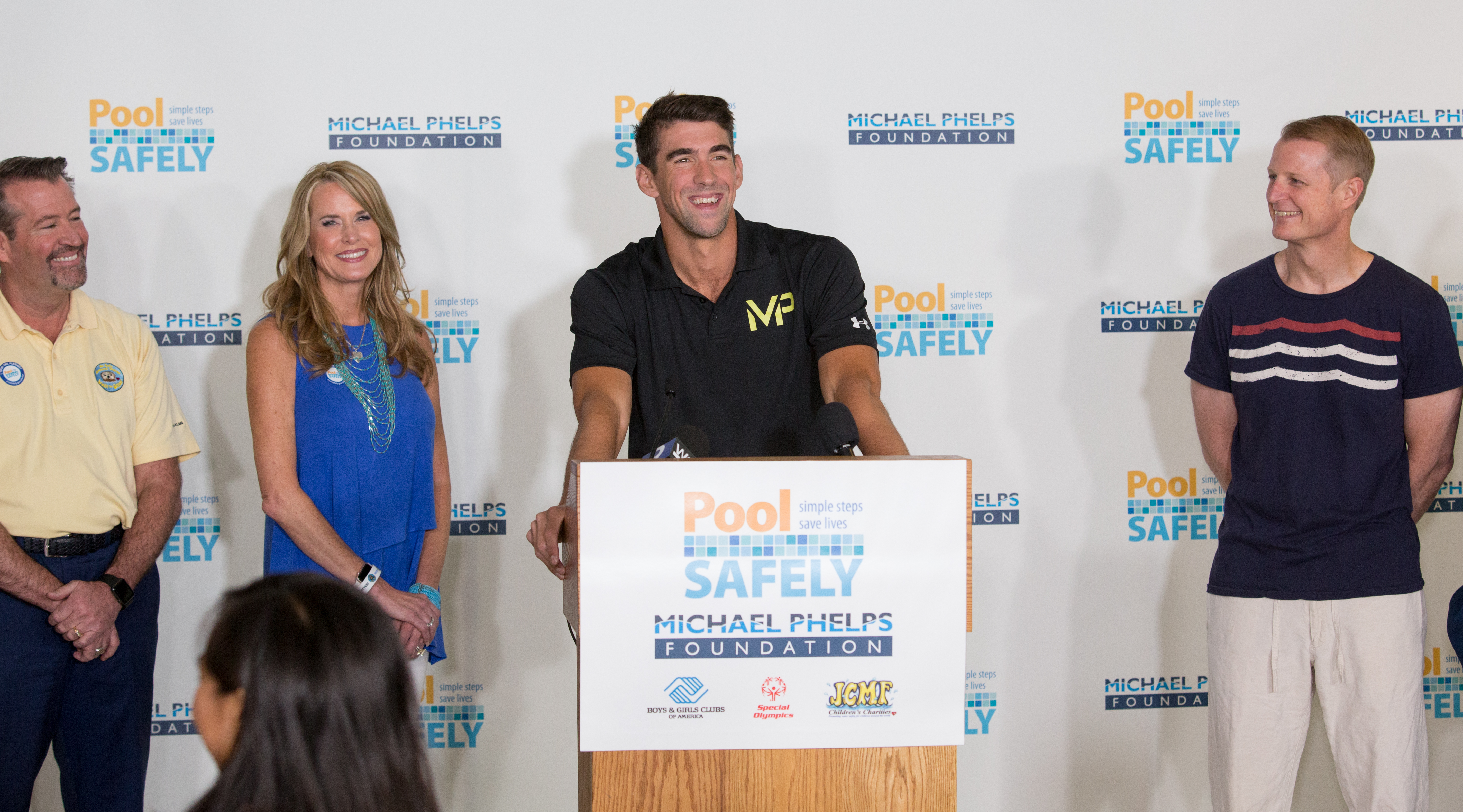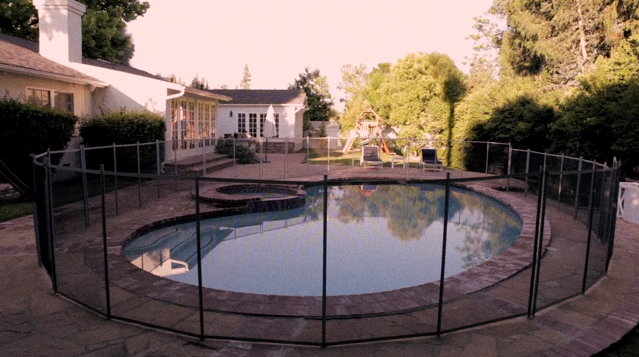MICHAEL PHELPS HELPING MAKE A DIFFERENCE-SAVING LIVES

Memorial Day weekend represents the traditional start of the summer swim

U.S. Consumer Product Safety Commission (CPSC) shows that the number of reported fatal child drownings in swimming pools involving children younger than 5—the most vulnerable population—has decreased 17 percent nationwide since 2010, the year their Pool Safety public education campaign was launched. Despite the decrease, fatal and non-fatal child drownings in pools and spas continue to pose a public health challenge across the United States.
As I began writing this post, I was it reminded of the time when a friend saved me from drowning. I was an adult and had not learned to swim. I had been in that pool many times, but this time I ventured out too far to the incline that quickly changed from 5 feet to 9 feet. Fortunately, a friend extended a poll out to me and pulled me in. The next day I immediately called a friend who was an instructor at the YMCA, and he taught me how to swim. I am very aware that all people need to know how to swim and I made it a point in my life to ensure that my children and my grandchildren know how to swim.
Learn to swim and teach your children
SAFE-FUN-HEALTHY

MICHAEL PHELPS HELPING MAKE A DIFFERENCE-SAVING LIVES
Despite what some believe, when I first entered the pool, I did not swim the butterfly stroke gracefully from end-to-end. Like most of our im program participants, I was afraid. In fact, I started swimming on my back because I didn’t like to get my face wet. But because I had someone to encourage me, who understood the importance of water safety, I developed a comfort level for the water. The more time I spent in the water, the stronger I became, and my passion for the sport grew. Swimming provided the opportunity to stay healthy while I learned about hard work, determination, and setting goals.
Michael
Michael Phelps Foundation
https://www.cpsc.gov/Newsroom/News-Releases/2017/Pool-Safely-and-Michael-Phelps-Foundation-Announce-Partnership-to-Help-Families-Stay-Safer-In-and-Around-Pools-and-Spas
Who we are
Upon returning home to the U.S. after competing in the 2008 Beijing Olympics, Michael launched the Michael Phelps Foundation and embarked upon an eight-city tour across the country to share his Dream, Plan, Reach message with Boys & Girls Clubs of America members.
In 2009, along with the help of KidsHealth.org and Michael Phelps Swimming, we developed our signature program, im, named for Michael’s signature event the Individual Medley. im is a water-safety, wellness, and goal-setting program for Boys & Girls Clubs of America members and Special Olympics International athletes.
Summer Safety Barrier Checklist for Pool and Spa Owners
Barriers, including a fence that completely surrounds the pool, alarms for the house or pool, and a power safety cover over the pool or spa, provide lifesaving layers of protection for children. A successful pool barrier prevents a child from getting over, under or through it and prevents the child from gaining access to the pool, except when supervising adults are present. Even if you already practice water safety, an extra safety step could mean the difference between a close call and a call to 911.
We would see a dramatic decline in the number of fatal and non-fatal drownings that occur each year in pools and spas if owners and operators followed this checklist:
• Install a 4-foot fence around the entire perimeter of the pool or spa.
• Use self-closing and self-latching gates that open out from the pool, and ask neighbors to do the same, if they have pools or spas.
• If your house serves as the fourth side of a fence around a pool, install and use a door or pool alarm.
• Make sure pool and spa covers are in good working order when the pool or spa is not in use. Make sure the control devices are out of the reach of children.
• If you have a portable pool, be sure to fence it, cover it or empty it, and store it away when not in use.
• If you have an above ground pool, secure, lock or remove the ladder when the pool is not in use, or surround it with a barrier.
You should also ask your local authorities if there are additional requirements for pool and spa owners in your local or state codes. It is important to remember that barriers are just one layer of protection to prevent fatal and non-fatal drownings. Never leave a child unattended in or near the water, and always designate an adult Water Watcher when children are in the pool or spa.
Be sure that your pool or spa is surrounded by a fence that is at least 4 feet high.

All fences should have a self-closing and self-latching gate.
These precautions or by no means a complete list of things that can be done to prevent drownings. Check out the complete CPSC website on pool safety for more suggestions. You may also check other sources for precautions that would meet your situation. There is no shortage of information on making the right decisions to make sure that you and your family are safe around swimming pools and other bodies of water.
https://www.cpsc.gov/Newsroom/News-Releases/2017/New-CPSC-Report-Fatal-Drownings-in-Pools-Involving-Young-Children-Decreases-By-17-Percent-Nationwide-Since-2010
I see stuff like this and I wonder if Phelps has sponsorships with leading pool-fence manufacturers and installers. How about we just watch our kids more closely and stop suing our neighbors? Drawn to its logical conclusion, should we also be forced to put fences around all of our ponds in the world?
There was a 17% reduction in lost lives, so I think it’s a worthy cause. Something is better than nothing.
stats can be misleading, what % of the 17% were people who lived on that property, or were invited by the family living there? Plus, WHO assembled those stats? Probably pool fence mfg society or some paid shill.
thanks for sharing this great article